Mastering Screen Recording Techniques on Windows 10
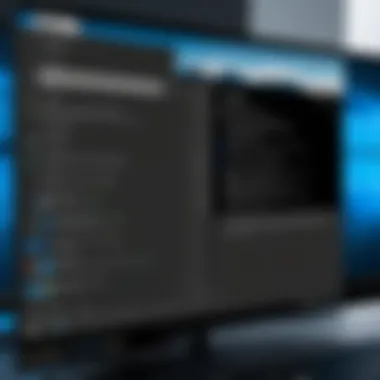
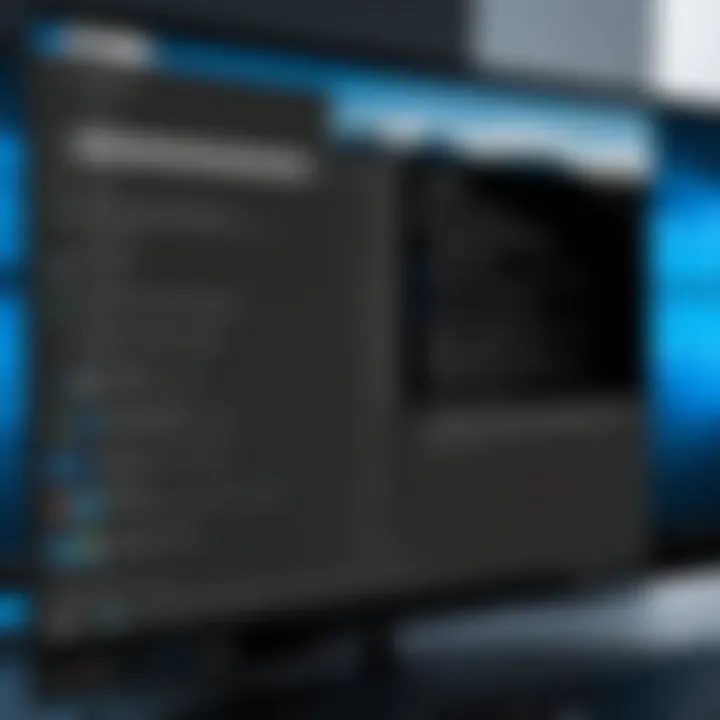
Intro
Screen recording has become an essential skill in today's digital landscape, especially for IT professionals and tech enthusiasts. Capturing on-screen activities can facilitate training, create tutorials, or document projects. Windows 10 offers several robust tools to enable effective screen recording, but it can be overwhelming to navigate through them. This guide aims to clarify the process, outlining the built-in features and third-party applications that allow users to seamlessly capture and edit their screen recordings.
By understanding the various options available, users can select the best method suitable for their specific needs. Additionally, factors such as audio settings, video quality, and post-recording editing options will be explored, ensuring a comprehensive knowledge base for the reader.
This guide will also highlight how to use the Xbox Game Bar effectively, as it is a key tool for most users. Third-party applications will be evaluated, revealing alternatives that provide unique advantages when the default options fall short. This information is aimed to equip readers with the necessary skills to master screen recording on Windows 10, enhancing their productivity and creativity in digital communications.
Foreword to Screen Recording on Windows
Screen recording is a valuable functionality in the digital landscape, particularly in an environment dominated by content sharing and remote collaboration. Recording screens allows for the creation of tutorials, presentations, and reviews, making it easier to communicate complex ideas visually. This section introduces the concept of screen recording on Windows 10, focusing on its significance and practical applications. Understanding the tools available for capturing screen activity can greatly enhance productivity and effectiveness in various tasks.
Understanding the Need for Screen Recording
With the rise of online learning and remote working, the need for screen recording has expanded significantly. Individuals and organizations alike find screen recording essential for many reasons. For example, educators utilize screen recording to create instructional videos that improve learner engagement.
Moreover, professionals in tech fields often record demos or presentations to showcase software features or provide training. Documenting processes through screen capture helps in clarity and retention, essential for effective communication. This method not only saves time but also aids in reaching wider audiences who may benefit from visual aids.
Applications of Screen Recording in IT
In the IT sector, screen recording plays a crucial role in documentation and training. Here are a few main applications:
- Technical Documentation: Creating tutorials or how-to videos forms a robust part of technical documentation. Recoding the screen provides users with step-by-step guides that are easier to follow.
- Software Demonstrations: By recording software in action, developers can share new features or important updates with stakeholders and clients without the need for live presentations.
- Troubleshooting and Support: Help desk teams greatly benefit from screen recordings that illustrate specific issues. Instead of lengthy descriptions, users can send videos demonstrating problems, making it easier to resolve them quickly.
- Remote Training: Screen recordings serve as a synchronous tool for training employees across different locations, making it possible to standardize processes and knowledge within the organization.
Built-in Options for Screen Recording
Screen recording has become an essential capability for many users, particularly in the realms of IT and technology. This feature allows professionals and enthusiasts alike to capture their screens for tutorials, presentations, or even troubleshooting purposes. In the context of Windows 10, built-in screen recording options provide a seamless way to perform this task without the need for additional software.
Windows 10 offers several features designed to facilitate screen recording. One of the primary tools is the Xbox Game Bar, which is geared towards gamers but serves broader purposes as well. This is significant since it simplifies the process of recording, enabling users to bypass the complications often associated with third-party applications.
Benefits of using built-in options include:
- Ease of Access: Since the Xbox Game Bar comes pre-installed with Windows 10, users do not need to search for or install additional software.
- Integration: Being part of the operating system, it integrates smoothly with other Windows features.
- Performance: Built-in tools often make better use of system resources, resulting in less lag while recording.
However, it is vital to consider some limitations. The Xbox Game Bar primarily focuses on game capture, which may restrict functionality for different types of recordings. For those looking for more advanced features, third-party applications may be necessary. Nevertheless, for basic recording needs, Windows 10's built-in options provide a reliable solution.
Using Xbox Game Bar for Screen Recording
The Xbox Game Bar is one of the most well-known tools for screen recording in Windows 10. Designed originally for gamers, it allows users to capture their screen activity easily and efficiently. While its gaming origins may seem limiting, the versatility of the Xbox Game Bar makes it a valuable tool for various recording requirements, such as software demonstrations or online courses.
Activating Xbox Game Bar
Activating the Xbox Game Bar is a straightforward process. Here are the steps:
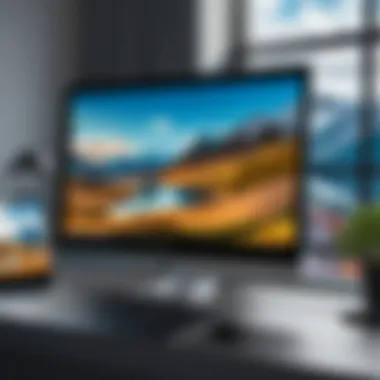
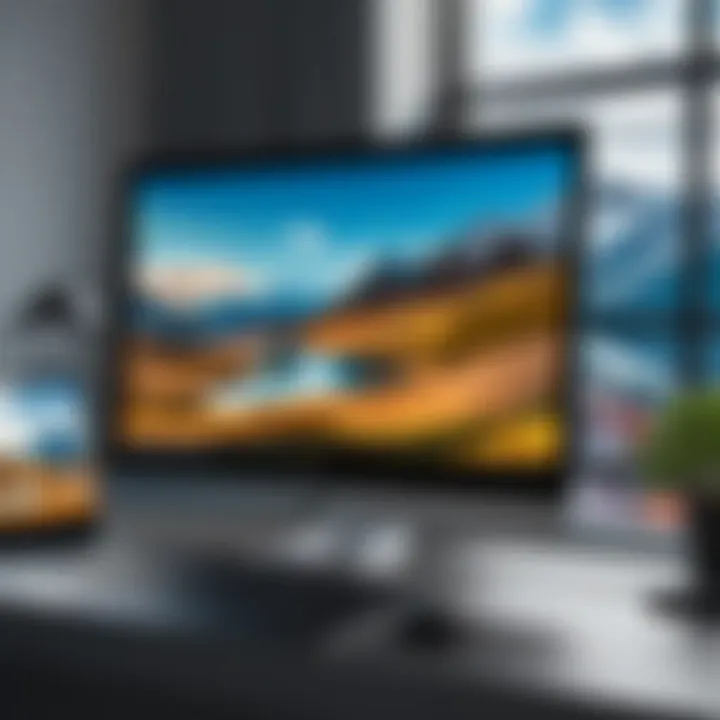
- Press the Windows key + G on your keyboard to open the Game Bar interface.
- If prompted, confirm that this is a game. You can do this even if you are not actually gaming.
- Ensure that the Game Bar is enabled in the Settings. Navigate to Settings > Gaming > Xbox Game Bar and toggle the switch to turn it on.
Once activated, the tool is ready for use. Users should familiarize themselves with the interface, as it provides essential controls for recording, capturing screenshots, and managing audio.
Navigation and Features of Xbox Game Bar
Once the Xbox Game Bar is open, navigating its interface is quite user-friendly. Users will find several widgets, including:
- Capture: This section allows one to start and stop recordings, as well as take screenshots.
- Audio: Users can adjust the volume levels for different applications while recording.
- Performance: Monitor CPU and GPU usage in real-time during the recording sessions.
- Community: Access gaming content and connect with other players, though this feature may not be relevant for non-gaming purposes.
The ease of navigation contributes to a satisfactory user experience when recording. However, it is worth noting that some features may appear more complex for users unfamiliar with gaming interfaces. A basic tutorial can be beneficial for those who need more guidance.
"For most basic needs, the Xbox Game Bar provides a powerful and integrated solution that enhances productivity without additional software."
Step-by-Step Guide to Record Screen with Xbox Game Bar
Recording your screen is a powerful tool for various purposes, including creating tutorials, capturing gameplay, or documenting software processes. The Xbox Game Bar, built into Windows 10, offers a straightforward method for screen recording without the need for additional software. This guide will break down the steps necessary to utilize this built-in tool effectively, ensuring that you can capture high-quality recordings with minimal effort.
Preparing Your System for Recording
Before using the Xbox Game Bar, it's essential to ensure that your system is ready. Here are some key considerations:
- Check system specifications: While Xbox Game Bar works on most Windows 10 devices, ensuring that your computer meets the platform's requirements can enhance performance. Basic specifications include a compatible graphics card, sufficient RAM, and updated drivers.
- Update Windows: New versions of Windows often come with improvements and bug fixes. Keeping your system up to date means better performance and fewer issues during recording.
- Allocate resources: To record smoothly, close any unnecessary applications that may consume processing power or memory. This will help prevent lag during recording.
- Set audio input: If you plan on recording voice-over or system sounds, check your audio settings. The Game Bar supports recording audio from various sources, including your microphone and system sounds. To confirm settings, right-click the sound icon in the taskbar and choose "Sounds."
Initiating the Recording Process
Once your system is prepared, follow these steps to start recording using the Xbox Game Bar:
- Open the application: Begin by opening the application or screen you wish to record. This could be a gameplay window, a presentation, or anything else visible on your screen.
- Launch Xbox Game Bar: To access the Game Bar, press the on your keyboard. This shortcut opens the Game Bar overlay. If you see the welcome screen, it confirms that Xbox Game Bar is active.
- Select the capture option: Look for the capture widget within the Game Bar. Click on the camera icon to bring up the recording controls.
- Start recording: Click on the record button, a circular icon, to initiate capturing your screen. You may also use the shortcut for faster access. The recording will begin, and a small timer will appear on your screen, indicating that it is active.
Stopping and Saving Your Recording
After finishing your recording, saving your video is simple:
- Stop the recording: To end the session, you can click the stop button in the Game Bar overlay. Alternatively, press again to halt the capture.
- Locate your file: The default save location for recordings is the Videos folder, under a sub-folder labeled "Captures." Here, you can find your recorded video file with a naming convention that includes the date and time of the recording.
- Review and edit if necessary: Play back your recording to ensure it meets your expectations. If you want to make changes, you'll need to use video editing software. Some basic options include trimming or combining multiple clips for a seamless finish.
By following these steps, you can utilize the Xbox Game Bar effectively for screen recording, capturing what you need with ease. Whether for professional purposes or personal use, mastering this tool opens up a world of possibilities.
Exploring Third-Party Screen Recording Software
Using built-in tools like the Xbox Game Bar is effective, but many users also want to expand their options. Third-party screen recording software can offer advanced functionalities that may not be available in native applications. They often provide enhanced editing capabilities, improved compression, and flexibility in audio configurations. These tools can be especially beneficial for content creators, educators, and IT professionals looking to produce high-quality video content.
Popular Third-Party Recording Tools
In the realm of screen recording, several third-party tools are recognized for their efficiency and feature sets. Among these, OBS Studio has gained a strong following due to its open-source nature and robust customization options. Camtasia is another tool that is favored for its intuitive user interface and powerful editing features. Lastly, Snagit stands out for its ease of use in capturing screen images along with video.
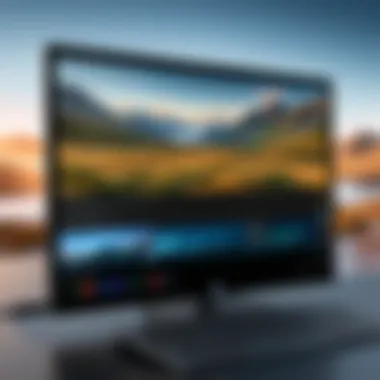
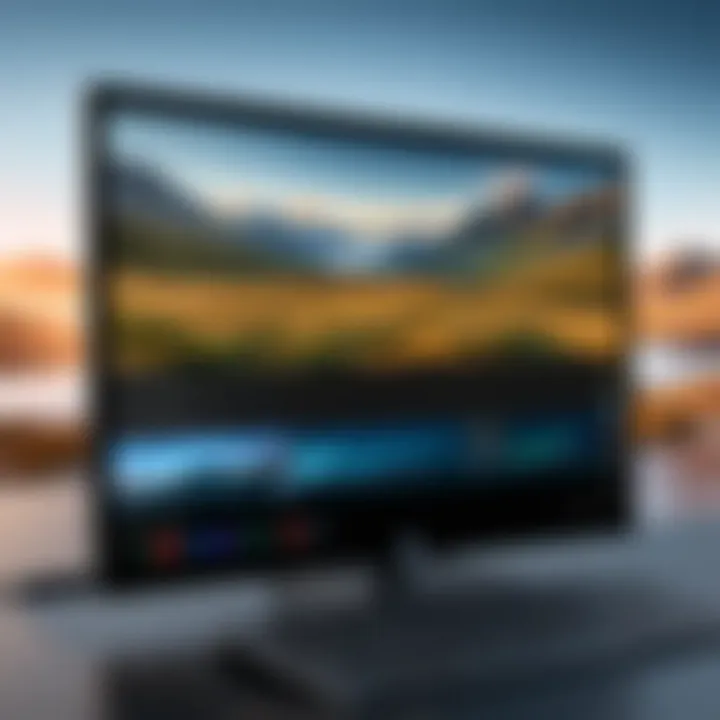
- OBS Studio: Ideal for streaming and recording. Supports high-resolution recording and multiple audio inputs.
- Camtasia: Combines screen recording with advanced editing tools. It allows easy integration of annotations and effects.
- Snagit: Focuses on quick captures and basic editing. Well-suited for professionals who need to create tutorials or presentations quickly.
Evaluating Features of Various Software
When selecting third-party screen recording software, it's crucial to evaluate several key features. Consider resolution options, as high-definition output is often necessary for professional use. Audio quality is essential; look for software that offers separate options for audio input and system sounds.
Another critical aspect is the ease of use. A user-friendly layout can significantly reduce the learning curve. Additionally, check if the software provides post-processing tools. This feature allows for editing after recording. Finally, consider compatibility with your operating system and potential integration with other software tools you might use.
"The right screen recording tool should align with your specific needs and use case, enhancing your workflow rather than complicating it."
Choosing the right third-party screen recording software can maximize your productivity and quality in capturing video content.
Considerations for Effective Screen Recording
Screen recording on Windows 10 can enhance your ability to share information and create tutorials. It is not just about capturing what's on the screen; effective screen recording requires careful consideration of several factors. This section will delve into important elements that significantly impact the quality of your recordings, providing insight for IT professionals and tech enthusiasts.
Audio Settings and Recording Quality
Audio quality is essential when recording your screen. Many recordings lack clarity due to poor sound settings or background noise. Here are some key considerations for audio:
- Microphone Selection: Use a good quality microphone to capture your voice. Built-in laptop microphones can be insufficient, so consider using a USB microphone or a headset.
- Input Level Adjustments: Ensure that your recording software is set to the appropriate input levels. If the levels are too low, your voice may not be audible. Conversely, if levels are too high, it could cause distortion.
- Environment: Choose a quiet place for recording. Background noise can affect the listening experience and make it difficult for viewers to understand your narration.
Improving audio recording quality significantly enhances the overall viewer experience. As users watch your screens, poor audio can detract from the intended message.
Resolution and Frame Rate Settings
The visual quality of your screen recordings plays a vital role as well. Paying attention to resolution and frame rate guarantees that viewers see clear and fluid content.
- Resolution: Higher resolutions provide clearer images. Recording in 1080p is generally recommended, especially for tutorials or presentations where details are crucial. Do ensure your display supports this resolution.
- Frame Rate: The frame rate affects how smooth your video appears. A frame rate of at least 30 frames per second (FPS) is advisable for most activities. For fast-paced action, such as gaming, aim for 60 FPS. This ensures the video flows well and does not seem choppy.
Consider testing different settings before the actual recording to find the optimal quality for your specific needs.
Post-Recording Editing and Optimization
After capturing screen recordings, it is equally important to ensure the content is polished and presented effectively. Post-recording editing and optimization are crucial for maximizing the impact of your recorded materials. Editing adds a layer of professionalism and clarity, allowing viewers to quickly grasp the essential information without distractions.
Optimization, on the other hand, focuses on improving the video quality and ensuring that files are set for the right platform or audience. Both elements are critical, especially in the realm of IT and tech where precise communication can make a notable difference.
Basic Editing Tools Available
Several editing tools are accessible for users after recording their screen on Windows 10. These tools range from simple cuts to more advanced features, helping users modify their videos effectively. Some of the most common editing software include:
- Windows Video Editor: A built-in option in Windows, it provides basic functionalities like trimming clips, adding text, and applying filters.
- Shotcut: An open-source video editor that offers a wider array of features, including multi-track editing and various effects.
- DaVinci Resolve: A professional-grade software for those looking for advanced tools like color correction and audio enhancements.
Additionally, web-based options like Clipchamp offer convenient editing without needing to download software. These tools can cater to varied levels of editing needs, facilitating efficient video production.
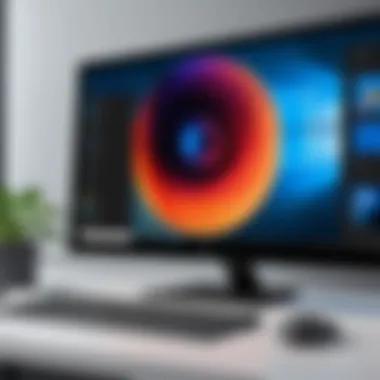
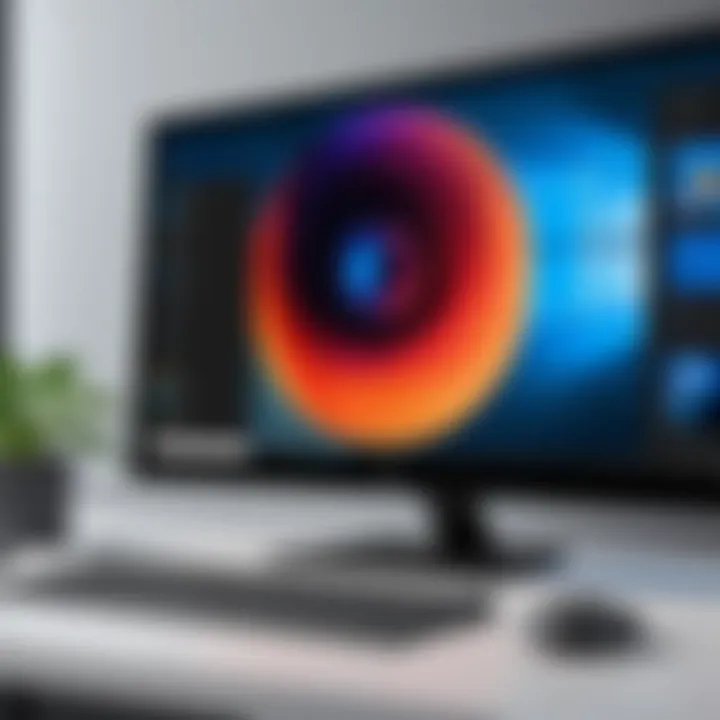
Exporting and Sharing Your Recorded Videos
Once editing is complete, the next step is exporting the video for sharing. Choosing the right format is vital to ensure good video quality and compatibility across platforms. Common video formats include MP4, AVI, and MOV, with MP4 being the most widely accepted for its balance of quality and file size.
When exporting, consider these options:
- Resolution: Higher resolutions (such as 1080p) generally provide better clarity but also increase file size. It's important to choose a suitable resolution depending on your audience's needs.
- File Compression: Use compression settings to reduce file size without significantly affecting quality. This is especially important for online sharing.
- Direct Sharing Options: Some software allows exporting directly to platforms like YouTube or Facebook, simplifying the sharing process.
After exporting, efficient sharing strategies come into play. Many users utilize cloud storage solutions such as Google Drive or Dropbox to share links directly. Social media platforms and professional networks like LinkedIn also serve as effective channels for reaching a wider audience.
"In the era of digital communication, the presentation of your content can be as important as the content itself."
By investing time in editing and optimizing your screen recordings, you elevate the quality of your work and ensure it meets the expectations of your target audience, be it for training, presentations, or informative content.
Common Challenges and Solutions in Screen Recording
Screen recording is a powerful tool in the digital age, often used for creating tutorials, capturing gameplay, or recording presentations. However, like any technology, it is prone to challenges that can hinder the recording experience. Understanding these challenges and knowing how to resolve them can significantly improve the quality and efficiency of screen recording.
The importance of addressing common challenges in screen recording lies in enhancing content creation. For IT professionals and tech enthusiasts, this knowledge enables them to create higher-quality recordings without unnecessary interruptions. Furthermore, finding solutions helps in maintaining workflow and reduces frustration during recording sessions.
Troubleshooting Common Issues
Several common issues arise when recording on Windows 10. Here are some of the issues you may face:
- Low Frame Rate: This occurs when the system struggles to capture frames smoothly, often due to insufficient performance.
- Audio Sync Problems: Sometimes, the audio may not match the video, resulting in a disjointed final product.
- Insufficient Storage Space: Running out of disk space mid-recording can lead to incomplete files and loss of valuable content.
- Screen Recording Software Crashes: This can happen if the software is not compatible or if there are conflicting applications running in the background.
Solutions:
- Adjust Settings: Lower the resolution or frame rate settings in the screen recording software to improve performance.
- Monitor Audio Settings: Ensure that audio is set to sync automatically. Testing settings before a full recording can prevent many issues.
- Check Storage Space: Always verify that sufficient disk space is available prior to recording sessions. Consider using external drives for larger projects.
- Close Background Applications: Disable any unnecessary applications that may consume system resources to help prevent crashes.
"Most recording issues can be resolved by being proactive in adjusting settings and maintaining system health."
Best Practices for Smooth Recordings
To ensure seamless screen recording, implementing best practices is essential. These practices not only resolve potential issues but also enhance the overall quality of the recorded content. Here are some recommended methods:
- Test Your Setup: Conduct a short test recording to check audio levels and video quality. This makes it easier to spot potential problems.
- Use a Wired Connection: For live streaming or online presentations, use a wired internet connection when possible to improve stability.
- Organize Your Workspace: Clear unnecessary icons and windows from the screen to minimize distractions. A clean desktop leads to a more professional video.
- Utilize Hotkeys: Familiarize yourself with keyboard shortcuts in your recording software. This can speed up starting and stopping recordings with ease.
- Prepare Your Content: Have a clear outline or script for what you want to present. This keeps the recording focused and reduces editing time later.
By addressing common challenges and adhering to best practices, screen recording on Windows 10 can be a more productive and enjoyable experience. With the right adjustments and preparation, users can capture high-quality videos that effectively communicate their message.
Finale
Summarizing Key Takeaways
- Native vs. Third-Party Tools: Both the Xbox Game Bar and third-party software offer unique features. The Xbox Game Bar is convenient for quick recordings, while third-party options like OBS Studio or Camtasia provide advanced functionality.
- Audio and Video Quality: Settings for audio and resolution are crucial. Consider your recording's context when adjusting these parameters, as they significantly affect the clarity.
- Post-Recording Processes: Editing tools play a vital role after recording. Familiarizing yourself with these tools facilitates better content presentation and enhanced viewer experience.
- Troubleshooting and Best Practices: Understanding common challenges and applying best practices can streamline the recording process and improve overall quality.
Encouraging Further Exploration of Recording Tools
Further exploration into recording tools can broaden your skills and enhance your projects. Today's landscape offers a wide range of software and features. Consider researching and testing various options. Visit resources such as Wikipedia or Reddit to gather insights from the community and discover updates in technology.
Keep in mind that as technology advances, so do the tools at your disposal. Staying informed and adaptable to new solutions will help you maintain a competitive edge. Whether you are an IT professional or a tech enthusiast, the pursuit of knowledge in screen recording techniques will undoubtedly benefit your work and projects.



